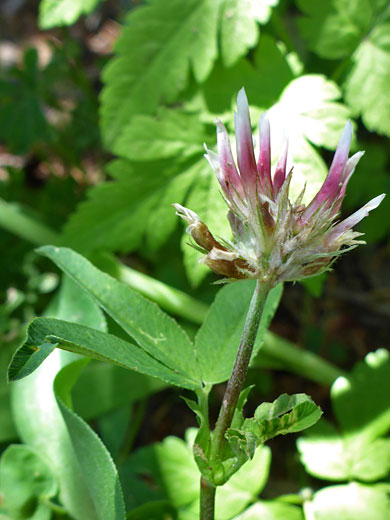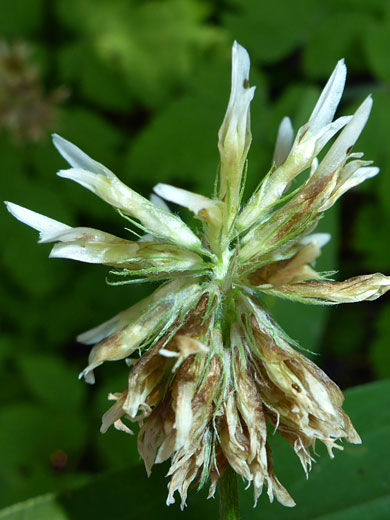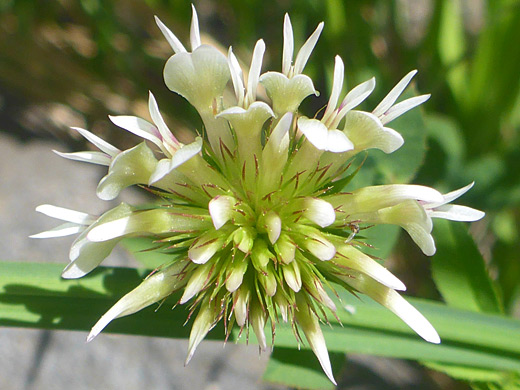Common name:
Long-stalked clover
Family:
Scientific name:
Trifolium longipes
Main flower color:
Range:
The Rocky Mountain states and all states to the west
Height:
Up to 16 inches
Habitat:
Meadows, streambanks, coniferous woodland, open slopes, from 4,000 to 11,000 feet
Leaves:
Alternate, stalked, palmately divided into three elliptic to oblanceolate leaflets, up to 2 inches long, with finely toothed margins
Season:
to August
Trifolium longipes is a widespread species across much the West, absent only from desert regions and most of Nevada; it inhabits a range of habitats and elevations so is variable in characteristics, and 11 subspecies are recognized, mostly occupying different regions; distinguishing characteristics include petal color, petal shape, calyx hairiness and leaflet shape (width:length ratio).
The trifoliate leaflets have a prominent pattern of pinnate veins, and a sparse strigose hair covering underneath; upper surfaces are hairless. Leaves grow at the base and (usually) along the stem, though some varieties are stemless. The spherical inflorescence is attached by a hairy, relatively long peduncle, up to 3 inches, and it contains between five and 16 flowers, attached by very short pedicels. Calyces are deeply divided into narrow, linear, bristle-like lobes, (usually) strigose hairy. Corollas are about twice as long as the calyces (up to 0.6 inches) and are white to pink/purple in color, withering to brown.
The trifoliate leaflets have a prominent pattern of pinnate veins, and a sparse strigose hair covering underneath; upper surfaces are hairless. Leaves grow at the base and (usually) along the stem, though some varieties are stemless. The spherical inflorescence is attached by a hairy, relatively long peduncle, up to 3 inches, and it contains between five and 16 flowers, attached by very short pedicels. Calyces are deeply divided into narrow, linear, bristle-like lobes, (usually) strigose hairy. Corollas are about twice as long as the calyces (up to 0.6 inches) and are white to pink/purple in color, withering to brown.
All Contents © Copyright The American Southwest | Comments and Questions | Contribute | Site Map








